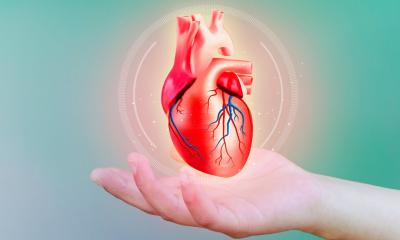News • Cholesterol-lowering medication
Statins overprescribed for primary prevention
Taking cholesterol-lowering drugs, or statins, as a preventive measure can reduce the risk of cardiovascular disease. A study by the University of Zurich now shows that this measure is recommended too often, as current guidelines fail to take into account the risks of side effects.
Source: Pixabay/Matvevna
Even healthy people who don't suffer from a cardiovascular disease are prescribed cholesterol-lowering drugs, known as statins, if they meet certain risk criteria. However, for years the use of statins for primary prevention has been hotly debated among experts. "Ultimately, this measure helps to prevent heart attacks or strokes in only a few cases. But all people who take statins are at risk of experiencing the side effects," says Milo Puhan, professor of epidemiology and public health at the University of Zurich.
The thresholds set by experts aren't based on any systematic studies
Milo Puhan
When deciding whether to prescribe statins to a patient, doctors use a number of risk factors such as cholesterol level, BMI and smoking to determine the likelihood of a person suffering a heart attack or stroke in the next 10 years. If this figure reaches or exceeds 10%, many medical guidelines recommend the use of statins; however, some guidelines put this number at 7.5%, whereas a Swiss association of general practitioners only suggests doing so from 20%.
If these guidelines, most of which are drawn up by cardiology organizations, are to be believed, more than one third of all people between the age of 40 and 75 would have to take statins as a preventive measure - in other words, hundreds of millions of people around the world. According to Puhan, however, these guidelines were drawn up without properly taking into account the unwanted side effects, such as muscle pain, cataracts, liver defects or diabetes. "The thresholds set by experts aren't based on any systematic studies."
Weighing up benefits and harmful effects

Striking a good balance between the benefits and the harmful side effects is therefore one of the great challenges of developing improved guidelines for preventive statin use. This is why Prof. Milo Puhan and his team at the Epidemiology, Biostatistics and Prevention Institute of UZH have now for the first time carried out a comprehensive statistical modeling study.
The researchers systematically compiled all data from specialist literature that documents the benefits and side effects of the preventive use of statins. To include the view of patients in their model, they also performed a survey among healthy people about the significance of heart attacks, strokes and certain side effects. Using this information, the scientists determined new thresholds for men and women across different age groups between 40 and 75. They also compared the benefits and unwanted side effects of four widely used statin preparations. "Our study shows that today statins are recommended far too often," says Puhan about the study's findings. According to his estimates, the newly set thresholds could cut the number of people who are given a recommendation to take statins by half.
The benefits of cholesterol-lowering drugs have been greatly exaggerated particularly when it comes to senior citizens: For the 70 to 75 age group, the study's model put the threshold at approx. 21% - in other words, the benefits of statins outweigh the harm from potential side effects of statins only if there's a 21% risk or higher that a person will suffer a heart attack or a stroke in the next 10 years. For men and women aged 40 to 45, the threshold is slightly lower, at 14% and 17% respectively. The researchers also noted that two of the four examined statin preparations, atorvastatin and rosuvastatin, had a significantly better balance of benefits and harms than the other two (simvastatin und pravastatin).
Considering the study's findings, Puhan recommends that all people concerned should discuss their individual risk for cardiovascular disease as well as possible side effects with their doctors before deciding whether to take statins as a preventive measure.
Source: University of Zurich
06.12.2018










